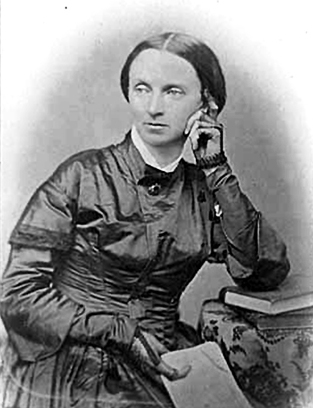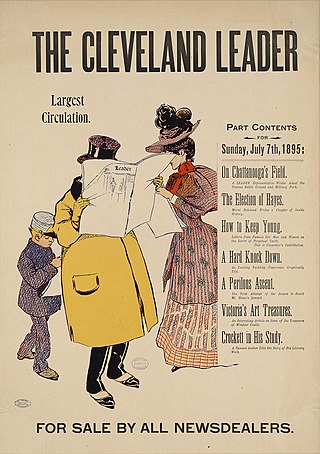![Pittsburgh Saturday Visiter [sic] masthead, April 7, 1849 Pittsburgh Saturday Visiter masthead, April 7, 1849.jpg](http://upload.wikimedia.org/wikipedia/commons/thumb/5/55/Pittsburgh_Saturday_Visiter_masthead%2C_April_7%2C_1849.jpg/220px-Pittsburgh_Saturday_Visiter_masthead%2C_April_7%2C_1849.jpg)
The Pittsburgh Saturday Visiter [sic] was an abolitionist and women's rights paper printed in Pittsburgh. Founded in 1847, Jane Swisshelm was the editor and Robert M. Riddle printed the paper. It had good circulation numbers and ran until 1854.
![Pittsburgh Saturday Visiter [sic] masthead, April 7, 1849 Pittsburgh Saturday Visiter masthead, April 7, 1849.jpg](http://upload.wikimedia.org/wikipedia/commons/thumb/5/55/Pittsburgh_Saturday_Visiter_masthead%2C_April_7%2C_1849.jpg/220px-Pittsburgh_Saturday_Visiter_masthead%2C_April_7%2C_1849.jpg)
The Pittsburgh Saturday Visiter [sic] was an abolitionist and women's rights paper printed in Pittsburgh. Founded in 1847, Jane Swisshelm was the editor and Robert M. Riddle printed the paper. It had good circulation numbers and ran until 1854.
Journalist Jane Swisshelm was the founder of the Pittsburgh Saturday Visiter [sic] and she funded the work through money in her own estate and printed the paper with Robert M. Riddle. [1] [2] Swisshelm served as the editor and Riddle printing the paper. [2] At the time, the abolitionist newspaper in Pittsburgh had closed and a new paper was needed. [2] She launched the Saturday Visiter on December 20, 1847. [1] There were crowds actually waiting in the streets for the first issue. [3] Swisshelm spelled "visitor" as "visiter" and believed her spelling was correct. [2]
The Saturday Visiter published women's rights, temperance, and abolitionist editorials. [4] She also endorsed Free Soil arguments against slavery. [5] The paper had a good circulation with around 6,000 subscribers, though more subscribers actually lived outside of Pennsylvania. [4] [2]
Eventually, Swisshelm started looking to sell the Visiter in 1853, and looked for someone with similar political views as herself. [6] After Swisshelm had a child, she realized that she was neglecting the work on the Visiter. [4] The paper itself went bankrupt by 1854, despite its good circulation and was sold to Riddle. [2] Riddle merged the paper with the weekly edition of his Commercial Journal , keeping Swisshelm on as editor. [7] [8]
Frederick Douglass said, "There are few papers exerting greater influence than the Saturday Visiter, edited by Mrs. Swisshelm." [9]

The Times is a British daily national newspaper based in London. It began in 1785 under the title The Daily Universal Register, adopting its current name on 1 January 1788. The Times and its sister paper The Sunday Times are published by Times Media, since 1981 a subsidiary of News UK, in turn wholly owned by News Corp. The Times and The Sunday Times, which do not share editorial staff, were founded independently and have had common ownership only since 1966. In general, the political position of The Times is considered to be centre-right.

Gamaliel Bailey was an American physician who left that career to become an abolitionist journalist, editor, and publisher, working primarily in Cincinnati, and Washington, D.C. Anti-abolitionist mobs attacked his offices in both cities during the 1840s.

Godey's Lady's Book, alternatively known as Godey's Magazine and Lady's Book, was an American women's magazine that was published in Philadelphia from 1830 to 1878. It was the most widely circulated magazine in the period before the Civil War. Its circulation rose from 70,000 in the 1840s to 150,000 in 1860. In the 1860s Godey's considered itself the "queen of monthlies".

The Liberator (1831–1865) was a weekly abolitionist newspaper, printed and published in Boston by William Lloyd Garrison and, through 1839, by Isaac Knapp. Religious rather than political, it appealed to the moral conscience of its readers, urging them to demand immediate freeing of the slaves ("immediatism"). It also promoted women's rights, an issue that split the American abolitionist movement. Despite its modest circulation of 3,000, it had prominent and influential readers, including all the abolitionist leaders, among them Frederick Douglass, Beriah Green, Arthur and Lewis Tappan, and Alfred Niger. It frequently printed or reprinted letters, reports, sermons, and news stories relating to American slavery, becoming a sort of community bulletin board for the new abolitionist movement that Garrison helped foster.

Allegheny Cemetery is one of the largest and oldest burial grounds in Pittsburgh, Pennsylvania. It is a historic rural cemetery.

Swisshelm Park is a neighborhood located in the southeast corner of Pittsburgh, Pennsylvania. It is represented on the Pittsburgh City Council by Barbara Warwick. Swisshelm Park houses PBF 19 Engine, and is covered by PBP Zone 4 and the Bureau of EMS Medic 7.

Jane Grey Cannon Swisshelm was an American Radical Republican journalist, publisher, abolitionist, and women's rights advocate. She was one of America's first female journalists hired by Horace Greeley at his New York Tribune. She was active as a writer in Pittsburgh, Pennsylvania, and as a publisher and editor in St. Cloud, Minnesota.
The Genius of Universal Emancipation was an abolitionist newspaper founded by Benjamin Lundy in 1821, in Mount Pleasant, Ohio.

The National Anti-Slavery Standard was the official weekly newspaper of the American Anti-Slavery Society, established in 1840 under the editorship of Lydia Maria Child and David Lee Child. The paper published continuously until the ratification of the Fifteenth Amendment to the United States Constitution in 1870. Its motto was "Without Concealment—Without Compromise." It not only implies suffrage rights for colored males, but also women's suffrage as well. It contained Volume I, number 1, June 11, 1840 through volume XXX, number 50, April 16, 1870.

The Slave Power, or Slavocracy, referred to the perceived political power held by American slaveowners in the federal government of the United States during the Antebellum period. Antislavery campaigners, led by Frederick Douglass, during this period bitterly decried what they saw as disproportionate and corrupt influence wielded by wealthy Southerners. The argument was that this small group of wealthy enslavers had seized political control of their states and were trying to take over the federal government illegitimately to expand and protect slavery. The argument was later widely used by the Republican Party that formed in 1854–55 to oppose the expansion of slavery.

Abby Kelley Foster was an American abolitionist and radical social reformer active from the 1830s to 1870s. She became a fundraiser, lecturer and committee organizer for the influential American Anti-Slavery Society, where she worked closely with William Lloyd Garrison and other radicals. She married fellow abolitionist and lecturer Stephen Symonds Foster, and they both worked for equal rights for women and for Africans enslaved in the Americas.
Sylvanus B. Lowry was an American Democratic political boss, newspaper publisher and pioneer in St. Cloud, Minnesota before the American Civil War. He moved there from Kentucky, bringing slaves with him as laborers. He was a profiteer of slavery-related-enterprises. He was elected to the Territorial Council, as the first president of the town council, and to the Minnesota State Senate in 1862.

The Cleveland Leader was a newspaper published in Cleveland from 1854 to 1917.
Robert M. Riddle was a newspaperman, postmaster and politician who served as Mayor of Pittsburgh from 1853 to 1854.
Lebanon Daily News is a local daily newspaper based in Lebanon, Pennsylvania. The main office is located on 718 Poplar Street. It publishes as an afternoon paper Monday through Friday and as a morning paper on Saturday and Sunday.
The Commercial Journal was a mid-19th century newspaper in Pittsburgh, Pennsylvania, United States.
St. Cloud Times is an American, English language daily newspaper headquartered in St. Cloud, Minnesota. The Times is owned by mass media holding company Gannett and is part of the USA Today network of newspapers. The print version of the paper is printed by ECM Publishers in Princeton, Minnesota.

The Universalist and Ladies' Repository was an American periodical published by the Universalist Church of America in Boston, Massachusetts under various names during the period of 1832 to 1873. During the period of 1834–43, it was published in Boston by Benjamin B. Mussey as Universalist and Ladies' Repository. In 1844 and through 1873, it was published in Boston by Abel Tompkins as Ladies' Repository.
Margaret L. Bailey was an American anti-slavery writer, poet, lyricist, as well as newspaper editor and publisher. She served as editor of The Youth's Monthly Visitor, a children's magazine, and as the publisher of The National Era, an anti-slavery journal.
The Signal of Liberty was an anti-slavery newspaper published in the mid-19th century in Michigan. The decision to publish a newspaper was one of the outcomes of the founding meeting of the Michigan Anti-Slavery Society that met for several days beginning on November 10, 1836 in Ann Arbor of the Michigan Territory (1805–1837). In 1838, Nicholas and William Sullivan published Michigan's first antislavery newspaper, the American Freedmen in Jackson, Michigan. Seymour Treadwell published and was the editor of the Michigan Freeman in 1839. The papers did not have a regular printing schedule.
{{cite web}}: CS1 maint: url-status (link)